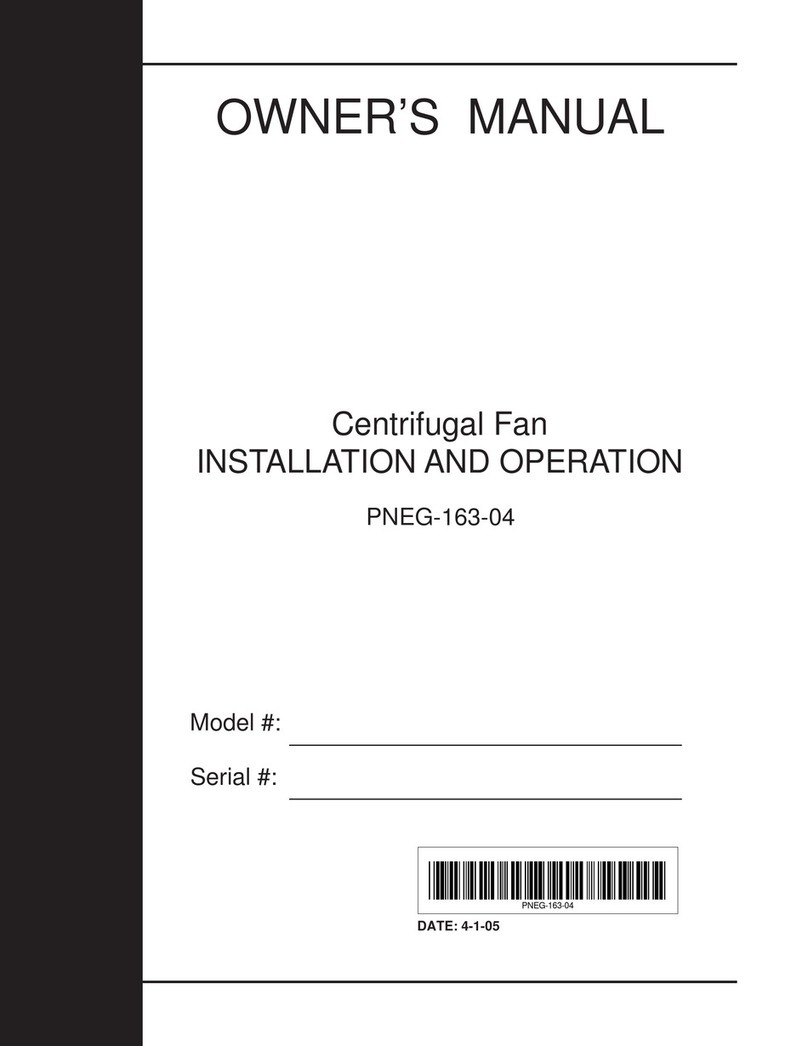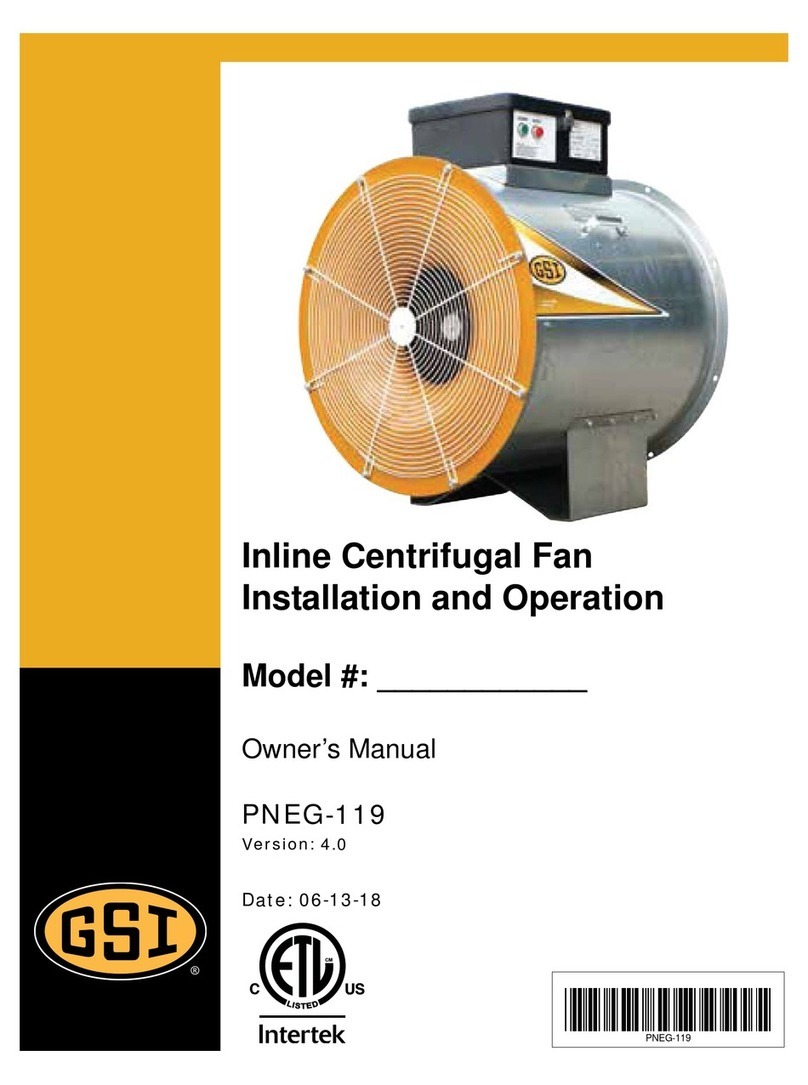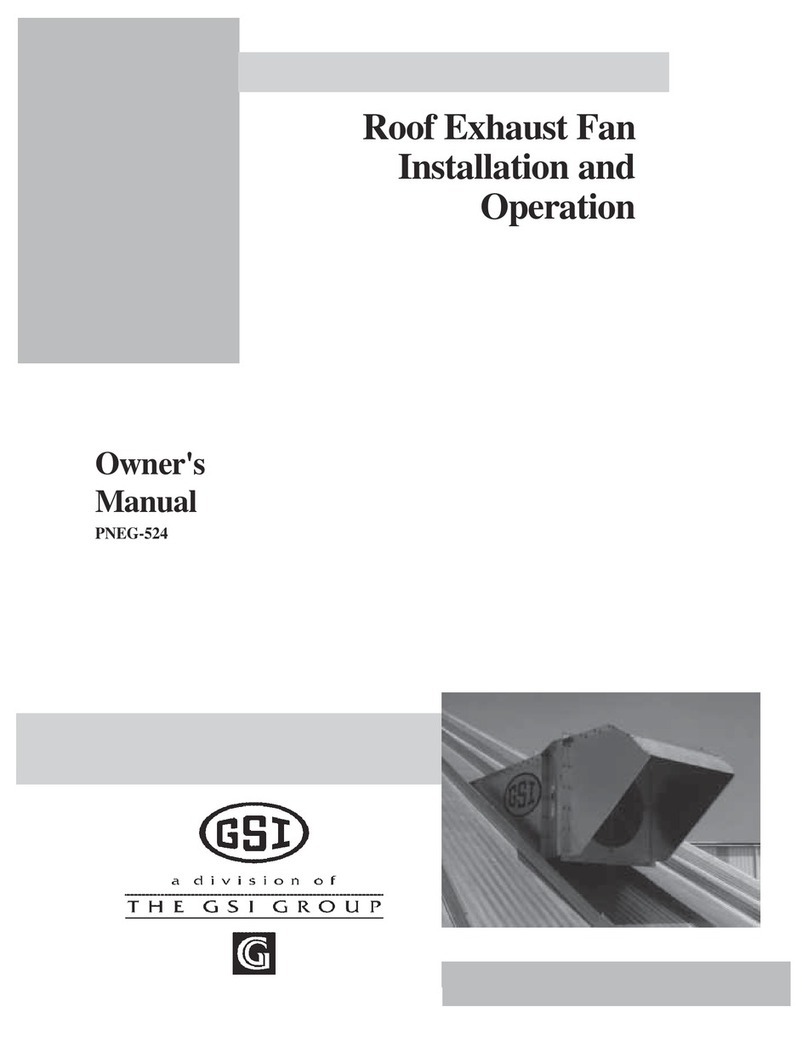
PNEG-163-04 Centrifugal Fan 3
Table of Contents
Contents
Chapter 1 Safety .................................................................................................................................. 5
Safety Guidelines ................................................................................................................ 5
Safety Decals ...................................................................................................................... 8
Roof Damage Warning and Disclaimer ............................................................................... 9
Chapter 2 Installation ....................................................................................................................... 10
Pre-Installation Requirements ........................................................................................... 10
Fan Installation .................................................................................................................. 11
Electrical Installation ......................................................................................................... 11
Test Run ............................................................................................................................ 12
Ground Rod Installation .................................................................................................... 13
Chapter 3 Fan Specifications ........................................................................................................... 14
1750 rpm Fan Electrical Specifications ............................................................................. 14
3500 rpm Fan Electrical Specifications ............................................................................. 15
Fan Dimensions ................................................................................................................ 16
Discharge Bolt Pattern Dimensions .................................................................................. 17
Inlet Cone Dimensions ...................................................................................................... 18
Fan Wheel Dimensions ..................................................................................................... 19
Fan Pad Location .............................................................................................................. 20
Chapter 4 Operation ......................................................................................................................... 21
Fan Start-Up ...................................................................................................................... 21
Fan Shut-Down ................................................................................................................. 21
Maintaining Grain Quality .................................................................................................. 21
Grain Storage .................................................................................................................... 22
Chapter 5 Maintenance and Troubleshooting ................................................................................ 23
Fan Wheel Removal & Installation .................................................................................... 23
Fan Wheel Inspection & Maintenance .............................................................................. 24
Taper Bushing Torque Requirements ............................................................................... 25
Fan Motor Removal & Installation ..................................................................................... 25
General Inspection ............................................................................................................ 25
Lubrication & Bearings ...................................................................................................... 26
Troubleshooting Charts ..................................................................................................... 27
Chapter 6 Parts ................................................................................................................................. 29
Main Assembly - 1750 rpm Fans ...................................................................................... 30
Main Assembly - 3500 rpm Fans ...................................................................................... 35
Main Assembly - Single Inlet Direct Drive Fan .................................................................. 40
Main Assembly - Double Inlet Fan .................................................................................... 41
Internal Bearing Arch Assembly - Double Inlet Fan .......................................................... 42
Motor Drives - Double Inlet Fan ........................................................................................ 43
Shaft Coupling ................................................................................................................... 44
Control Box Sub - Assembly ............................................................................................. 45
Control Box Assembly - Single Phase 230 Volt ................................................................ 46
Control Box Assembly - Three Phase 230 Volt ................................................................. 47
Control Box Assembly - Three Phase 460 Volt ................................................................. 51
Motor Conduit Assembly ................................................................................................... 56
































